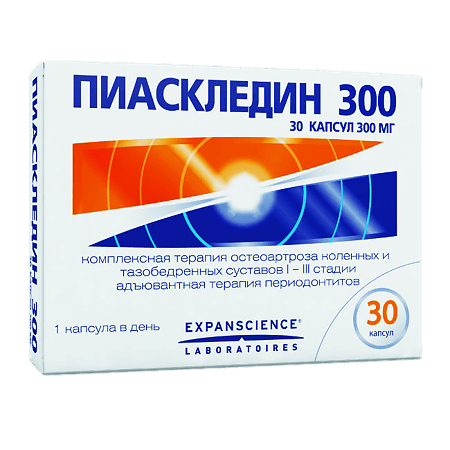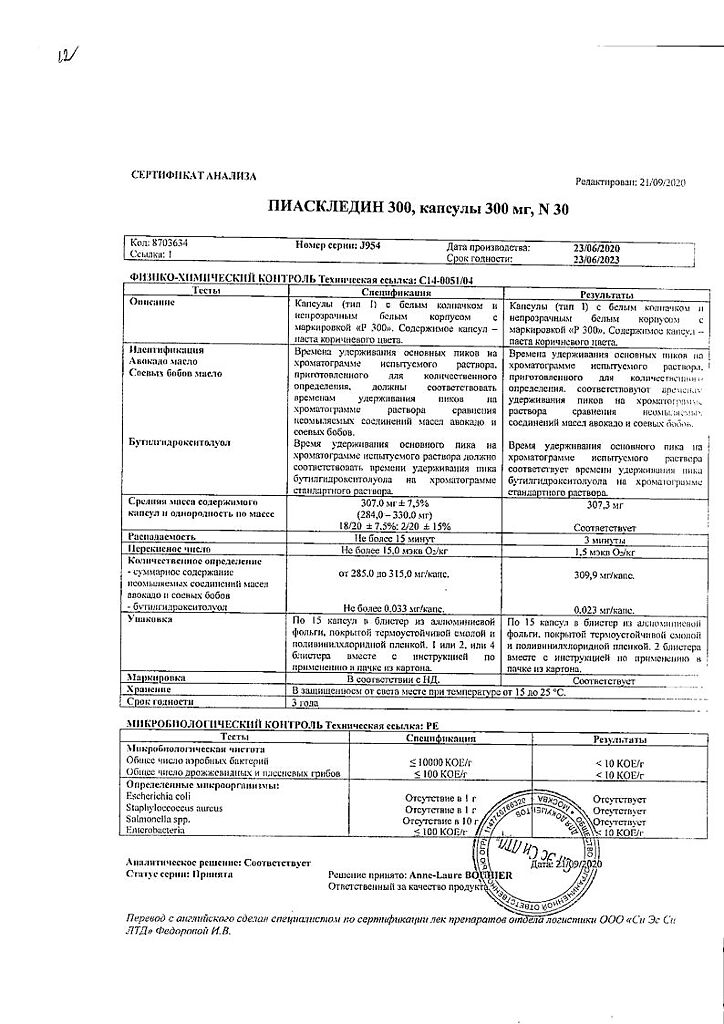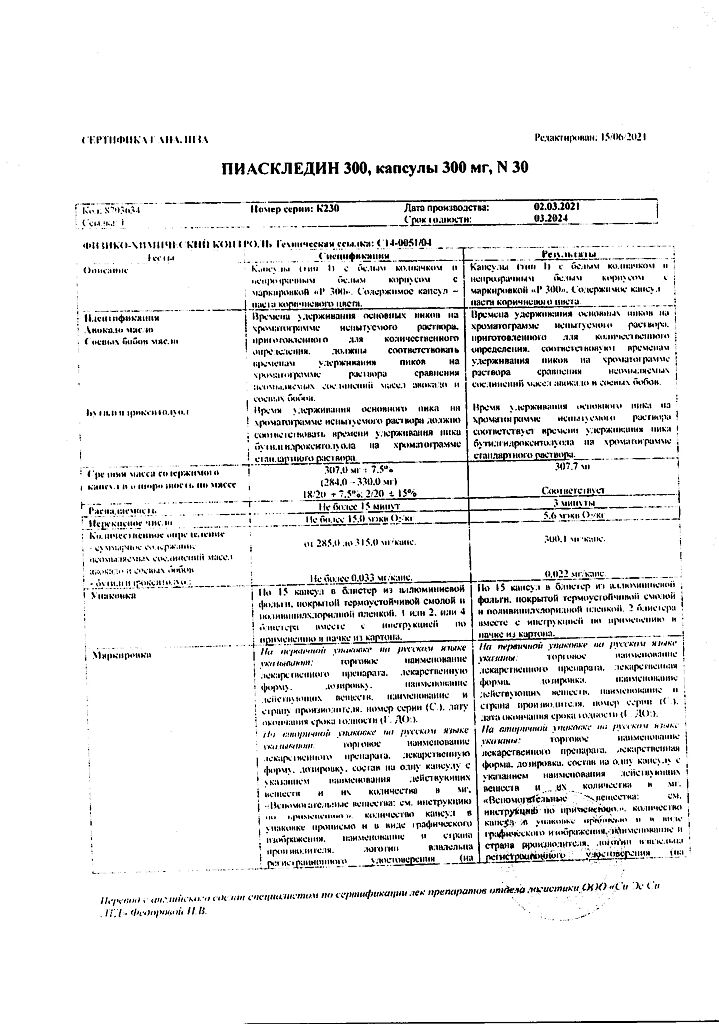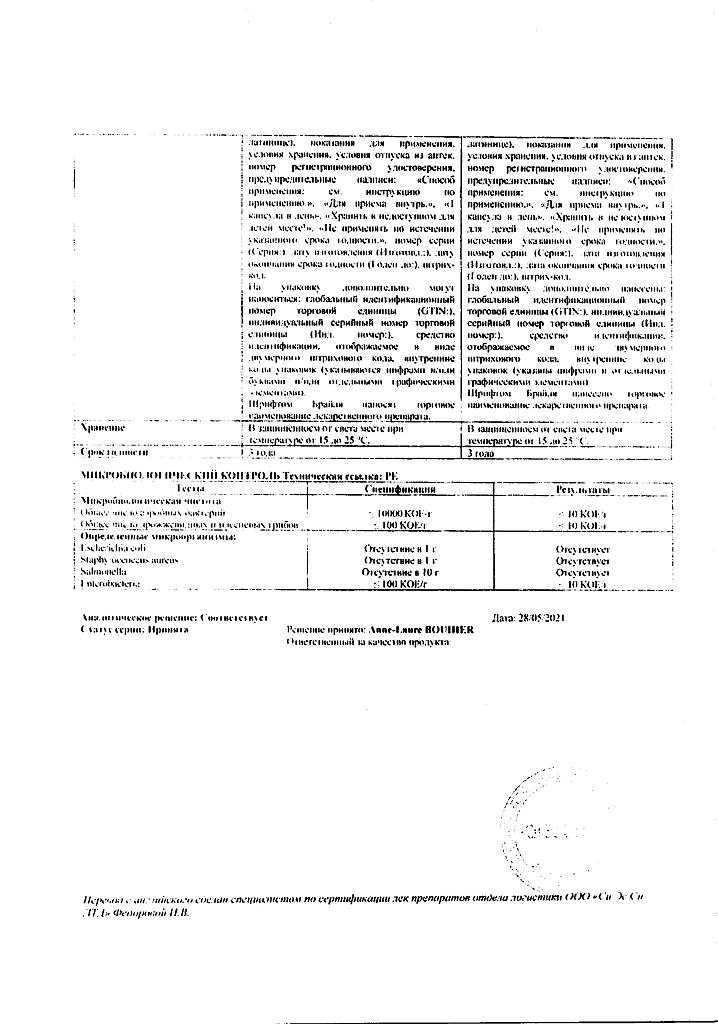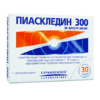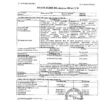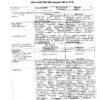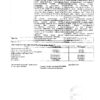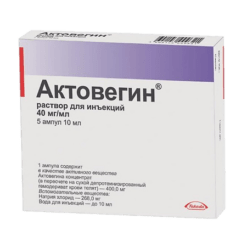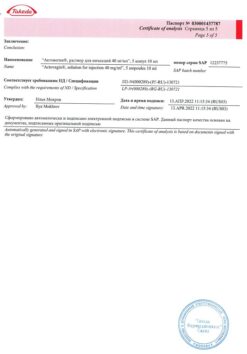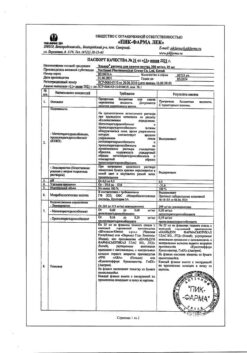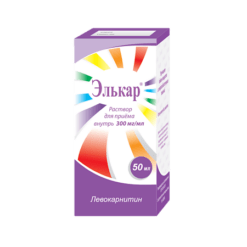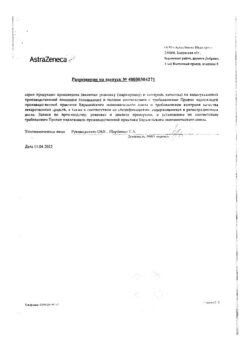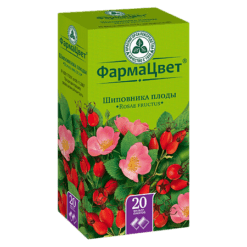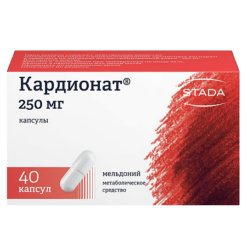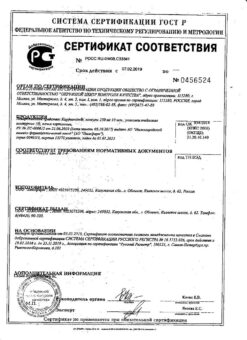No products in the cart.
Piaskledin 300, capsules 30 pcs
€52.02 €43.35
Description
Pharmaceutical group:
Pharmaceutical regulating metabolism in cartilage.
Pharmaceutical action:
Piascledine 300 regulates the metabolic processes in the cartilage. It has anti-inflammatory and analgesic effect on the joints. Helps to slow down the degenerative process in the cartilage of the joints, reduces pain associated with this process, restores motor function. Experimental studies have shown that the product has a regenerating effect on cartilage by stimulating the synthesis of collagen in joint chondrocytes.
The unsaponifiable compounds of soybean oil and avocado oil:
- increase collagen production and inhibit the stimulatory effect of IL-1 on collagenase synthesis;
- increase the production of plasminogenesis activator inhibitor, thus reducing cartilage damage both indirectly by stimulating metalloproteinases and through direct action on cartilage by activating proteoglycan degradation, which prevents cartilage destruction;
- increase the action of transforming growth factor β1 (TGF) in chondrocytes, which has an anabolic effect;
- regulate the synthesis of macromolecules of intercellular substance of articular cartilage, are a stimulator of synthesis of macromolecules of hyaline cartilage as well as periodontal tissue, preventing tooth loss.
.
Indications
Indications
Symptomatic treatment of osteoarthritis of the knee joint with a delayed-release drug.
Pharmacological effect
Pharmacological effect
Pharmacotherapeutic group: Other non-steroidal anti-inflammatory and antirheumatic drugs.
ATX code: M01AX26
Pharmacological properties
Pharmacokinetics
Piascledine 300 is an extract consisting of many components of soy and avocado, for which special precise research methods are not available. Therefore, there are no data on the pharmacokinetic properties of Piaskledin 300.
Pharmacodynamics
Clinical efficacy and safety
The effectiveness of Piascledine 300 in patients suffering from osteoarthritis has been evaluated in clinical studies. The drug demonstrated beneficial effects in three clinical studies (CTs) (one placebo-controlled study and two active comparative studies) described below:
In a trial of 86 patients with knee osteoarthritis, NSAID consumption was reduced after 3 months by approximately 70% in patients receiving Piascledine 300, compared with 33% for placebo. Pain at rest and algofunctional index decreased significantly when taking the drug at a dose of 300 mg compared to placebo.
During two clinical studies comparing the effectiveness of Piascledine 300 (dosage 300 mg once daily) and chondroitin sulfate (dosage 400 mg 3 times daily) for 6 months in 134 patients, and diacerein (dosage 50 mg twice daily) for 3 months in 64 patients, it was demonstrated that Piaskledin 300 is not inferior to both chondroitin sulfate and diacerein according to the main criteria (total WOMAC score in the CT compared with chondroitin sulfate and NSAID consumption in the CT compared with diacerein). The improvement in Lequesne index and pain at rest when taking Piascledine 300 was also not inferior to chondroitin sulfate and diacerein.
The mechanism of action of avocado fruit and soybean unsaponifiable oil has been evaluated through in vitro and in vivo studies in osteoarthritis, confirming the following key pharmacological properties:
Direct and indirect effects promoting the synthesis of macromolecules of the extracellular matrix of cartilage (anabolic pathway):
Increased synthesis of proteoglycans (especially high molecular weight) by normal articular chondrocytes, as well as chondrocytes in osteoarthritis, similar in properties to physiological proteoglycans;
Stimulation of the synthesis and accumulation of aggrecan (one of the main proteoglycans in cartilage) in chondrocytes during osteoarthritis;
Stimulation of type II collagen production by synoviocytes and articular chondrocytes;
Prevention of the inhibitory effect of osteoarthritic subchondral osteoblasts on the synthesis of aggrecan and type II collagen by chondrocytes in a co-culture model;
Stimulation of the biosynthesis of factors such as transforming growth factor β1 and β2 (TGF-β1 and TGF-β2).
Effects limiting the degradation of cartilage extracellular matrix components (catabolic pathway):
Inhibition of proteoglycan degradation;
Blockade of the inhibitory effect of interleukin-1β (IL-1β) on the production of collagen and aggrecan;
inhibition of the stimulating effect of IL-1β on the collagenolytic activity of synovial cells and chondrocytes;
inhibition of IL-1β-induced synthesis and activity of collagenase (MMP-13) and stromelysin (MMP-3) in chondrocytes;
decreased production of pro-inflammatory cytokines IL-6 and IL-8, as well as
IL-1β-induced PGE2 overproduction;
stimulation of biosynthesis of plasminogen activator inhibitor-1 (PAI-1).
Piascledine 300 belongs to the SYSADOA group of drugs (symptomatic delayed-acting drugs in the treatment of osteoarthritis), which are characterized by delayed action.
Special instructions
Special instructions
Impact on the ability to drive vehicles and machinery
Piascledine 300 has no or negligible effect on the ability to drive vehicles and machines.
Active ingredient
Active ingredient
Avocado oil, soybean oil
Composition
Composition
Active ingredients: avocado fruit oil unsaponifiable compounds 100.00 mg, soybean oil unsaponifiable compounds 200.00 mg.
Excipients: colloidal silicon dioxide 7 mg, butylated hydroxytoluene 0.03 mg.
Composition of the capsule shell:
Capsule body: titanium dioxide 2%, gelatin up to 100%.
Capsule cap: titanium dioxide 2%, gelatin up to 100%.
Sealing solution (composition for sealing the capsule):
polysorbate 80 0.25 mg, gelatin 5.75 mg.
Composition of TekPrint SW-9008 Black Ink for capsule marking: shellac, propylene glycol, concentrated ammonia solution, potassium hydroxide, black iron oxide dye.
Pregnancy
Pregnancy
Pregnancy
There are no clinical data on the effect of Piascledine 300 on pregnancy. In this regard, the use of Piaskledin 300 is contraindicated during pregnancy, as well as in women of childbearing potential who do not use reliable methods of contraception.
Breastfeeding period
There are no clinical data on the effect of Piascledine 300 during breastfeeding. In this regard, the use of Piaskledin 300 is contraindicated during breastfeeding.
Contraindications
Contraindications
– hypersensitivity to the components of the drug;
– period of pregnancy and breastfeeding;
– age up to 18 years.
Precautions for use
Adverse reactions, such as hepatic cytolysis, cholestasis, jaundice and increased transaminases, were observed infrequently during the post-marketing period.
Patients with a history or acute stage of liver and gallbladder disease should inform their doctor before using Piaskledin 300. If symptoms of liver or biliary tract damage occur (such as unexplained nausea, vomiting, abdominal pain, fatigue, loss of appetite, yellowing of the skin and sclera, dark urine), you should stop using the drug and consult a doctor immediately.
Adverse reactions, such as hypersensitivity, skin rash, urticaria, dermatitis, observed during clinical studies were observed infrequently. If symptoms and allergic reactions occur (such as itching, hives, skin rash/redness, facial swelling, difficulty breathing), stop treatment and consult a doctor immediately.
Some cases of thrombocytopenia (low platelet count) have been reported.
Consult your doctor before using Piascledine 300 in case of concomitant anticoagulant therapy (see section “Interaction with other drugs”).
If symptoms of a bleeding disorder occur (such as red or purple spots on the skin, spontaneous bruising or ecchymoses, or bleeding from mucous membranes), stop treatment and consult a doctor immediately.
Side Effects
Side Effects
General security profile:
Side effects related to gastrointestinal disorders during therapy with Piascledine 300 were observed in approximately 3% of patients. Adverse reactions such as diarrhea, abdominal pain, dyspepsia, bloating and nausea occurred in 0.4-1.1% of patients and were mild or moderate in severity and dose-dependent.
Summary list of side effects observed during clinical trials and the post-registration period:
Adverse reactions
The following describes the adverse events observed in clinical studies and controlled clinical trials compared with placebo/active comparator, including 1310 treated patients (1174 of 1310 patients received the drug at a dose of 300 mg once daily) and/or adverse events identified during the post-marketing period.
Side effects are classified according to their frequency as follows: very common (≥1/10), common (≥1/100 to <1/10), uncommon (≥1/1000 to <1/100), rare (≥1/10,000 to <1/1000), very rare (<1/10,000).
System-organ class
Frequency
Side effect
Blood and lymphatic system disorders
Rarely
Thrombocytopenia
Immune system disorders
Uncommon
Increased sensitivity (*)
Nervous system disorders
Uncommon
Headache
Gastrointestinal disorders
Often
Diarrhea
Uncommon
Dyspepsia, dysgeusia(§), nausea, abdominal pain, discolored stool (**)
Rarely
Enteritis, vomiting, belching, dry mouth
Disorders of the liver and biliary tract (#) (**)
Uncommon
Hepatic cytolysis; cholestasis; jaundice; increased transaminases, alkaline phosphatase, bilirubin, gamma-glutamyl transpeptidase
Skin and subcutaneous tissue disorders
Often
Toxicoderma (*), eczema (*)
Renal and urinary tract disorders
Uncommon
Chromaturia (**)
Rarely
Nephrolithiasis
Disorders of the reproductive system and mammary glands (#)
Uncommon
Pain in the mammary gland; swelling of the mammary gland; metrorrhagia
General disorders and reactions at the injection site
Uncommon
Asthenic syndrome
Laboratory and instrumental data
Rarely
High blood pressure (***)
(§) – The capsule should be taken mid-meal to avoid dysgeusia.
See section “Method of administration and dosage”.
(#) – These side effects were reported during the post-marketing period. Because such reactions were not reported in clinical studies involving 1,310 patients treated with the drug, their incidence is estimated to be uncommon.
Description of highlighted side effects:
(*) – Taking Piascledine 300 in some cases can lead to hypersensitivity, such as systemic allergic reactions, i.e. acute onset of the disease with skin lesions (itching, urticaria, erythema, rash), mucous tissues and/or cough, persistent gastrointestinal symptoms or decreased blood pressure and/or associated symptoms. See section “Precautions for Use”.
(**) – During therapy with Piascledine 300, signs of liver dysfunction may occur, such as abdominal pain associated with nausea, stool discoloration, chromaturia and/or jaundice. See section “Precautions for Use”.
(***) – During therapy with Piascledine 300, symptoms indicating an increase in blood pressure (for example, headache, hearing loss, flushing) may be observed.
Interaction
Interaction
When taking anticoagulants, consult a doctor due to the potential risk of bleeding.
Overdose
Overdose
An overdose of the drug (more than 1 capsule per day) may cause or worsen gastrointestinal and/or hepatic disorders.
If such disorders occur, treatment is symptomatic; therapy with Piascledine 300 should be reconsidered.
Storage conditions
Storage conditions
At temperatures from 15 to 25°C (blister in a pack).
Keep out of the reach of children!
Shelf life
Shelf life
3 years.
Do not use after expiration date.
Manufacturer
Manufacturer
Laboratory Expansion, France
Additional information
| Shelf life | 3 years |
|---|---|
| Conditions of storage | In a light-protected place at 15-25 °C |
| Manufacturer | Laboratory Expansions, France |
| Medication form | capsules |
| Brand | Laboratory Expansions |
Related products
Buy Piaskledin 300, capsules 30 pcs with delivery to USA, UK, Europe and over 120 other countries.

